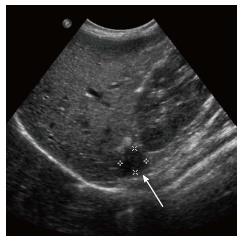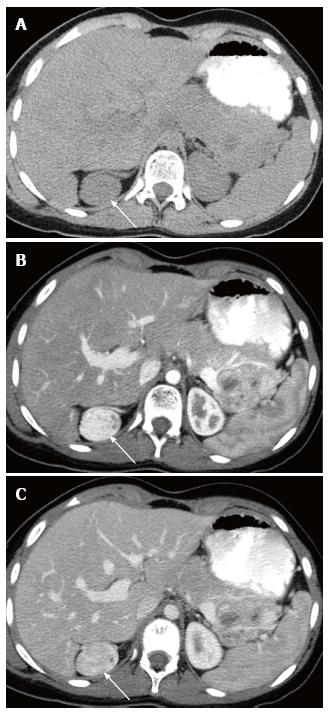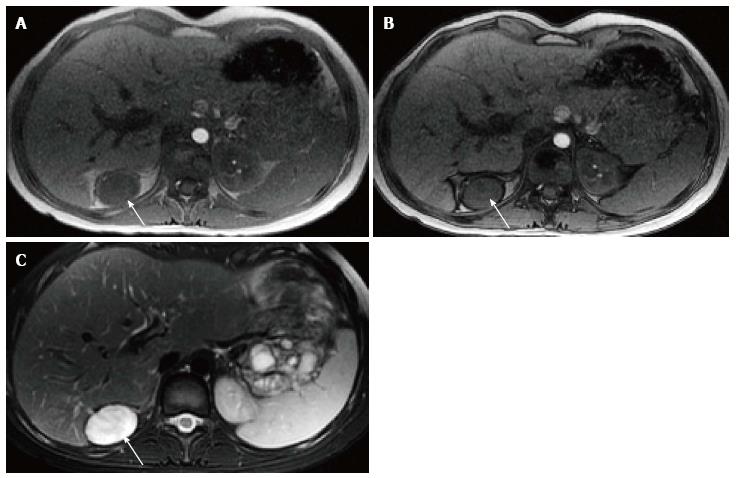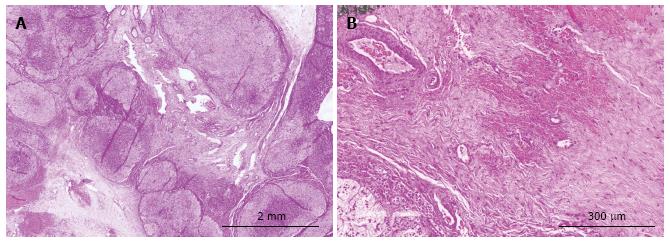Copyright
©2014 Baishideng Publishing Group Inc.
World J Radiol. Dec 28, 2014; 6(12): 919-923
Published online Dec 28, 2014. doi: 10.4329/wjr.v6.i12.919
Published online Dec 28, 2014. doi: 10.4329/wjr.v6.i12.919
Figure 1 Grayscale longitudinal ultrasound examination, showing a well circumscribed hypoechoic oval shaped nodule within the right adrenal gland (arrow).
Figure 2 Axial non-contrast computed tomography (A), contrast enhanced computed tomography in arterial (B) and venous phases (C), demonstrating marked enhancement of right adrenal oval mass (attenuation values of 222 and 169 HU respectively) (arrow).
The mass was isodense on non-contrast scan (attenuation value of 39 HU) (arrow).
Figure 3 Magnetic resonance imaging in various pulse sequences.
Axial T1-weighted in-phase (A), out-of-phase (B), and axial T2-weighted image (C), showing a right adrenal mass (arrow) which appears isointense skeletal muscles on T1-WI, no signal drop on out-of-phase, compared to in-phase pulse sequences, with markedly increased signal intensity on T2-weighted image.
Figure 4 Low power view (A), showing nodular adrenal gland with intervening fibrotic areas.
High power picture (B) demonstrating a hypocellular spindle cell proliferation. Areas of hemorrhage as well as the presence of thick walled blood vessels were also noted.
- Citation: Wassal EY, Habra MA, Vicens R, Rao P, Elsayes KM. Ovarian thecal metaplasia of the adrenal gland in association with Beckwith-Wiedemann syndrome. World J Radiol 2014; 6(12): 919-923
- URL: https://www.wjgnet.com/1949-8470/full/v6/i12/919.htm
- DOI: https://dx.doi.org/10.4329/wjr.v6.i12.919












